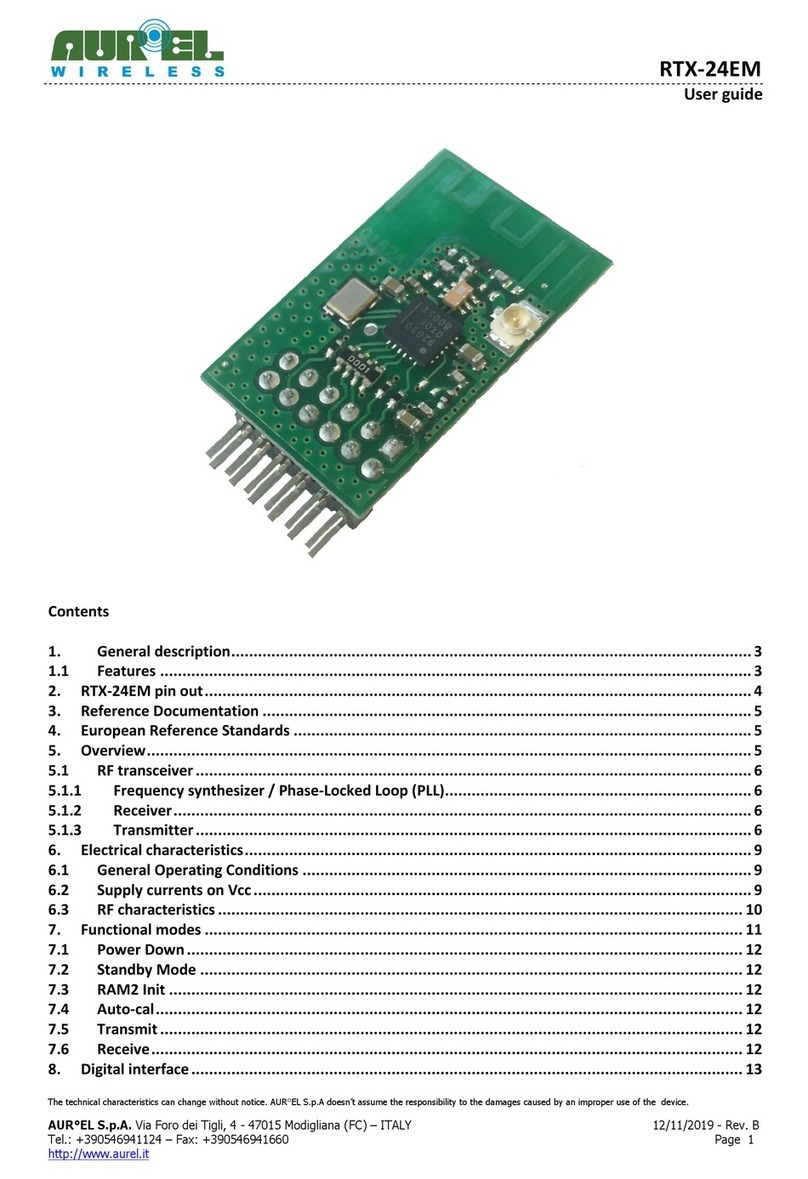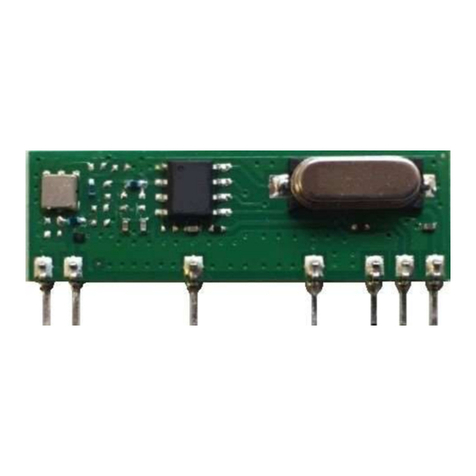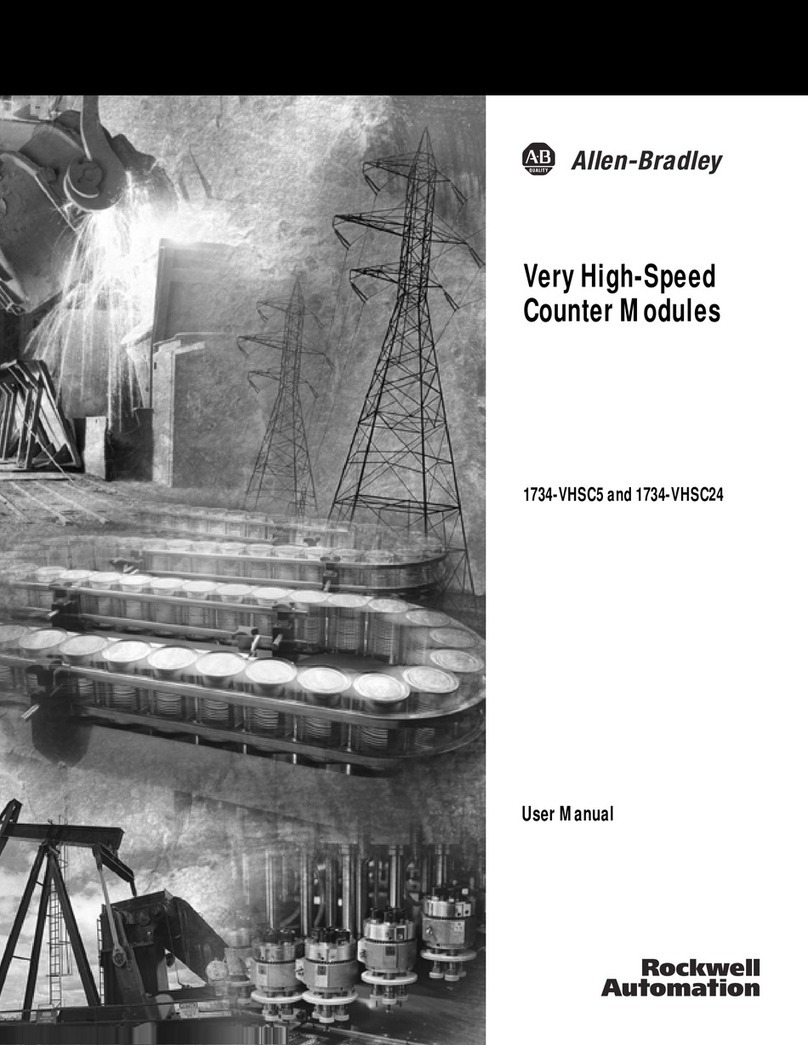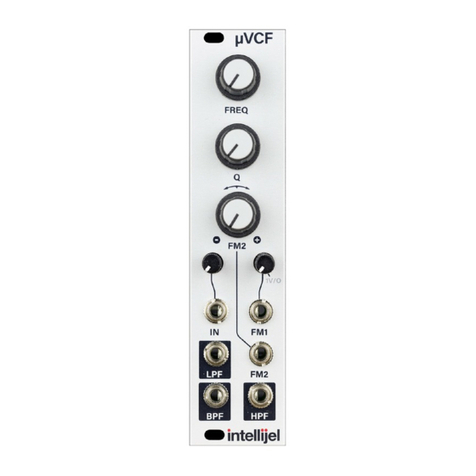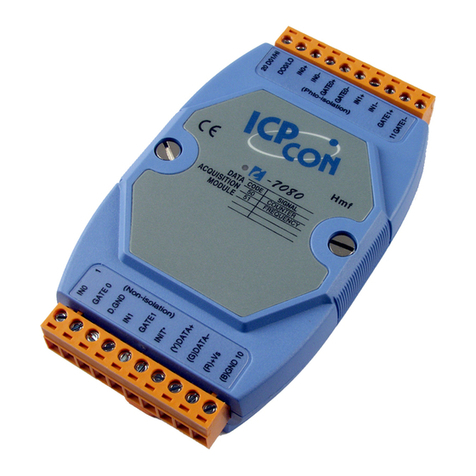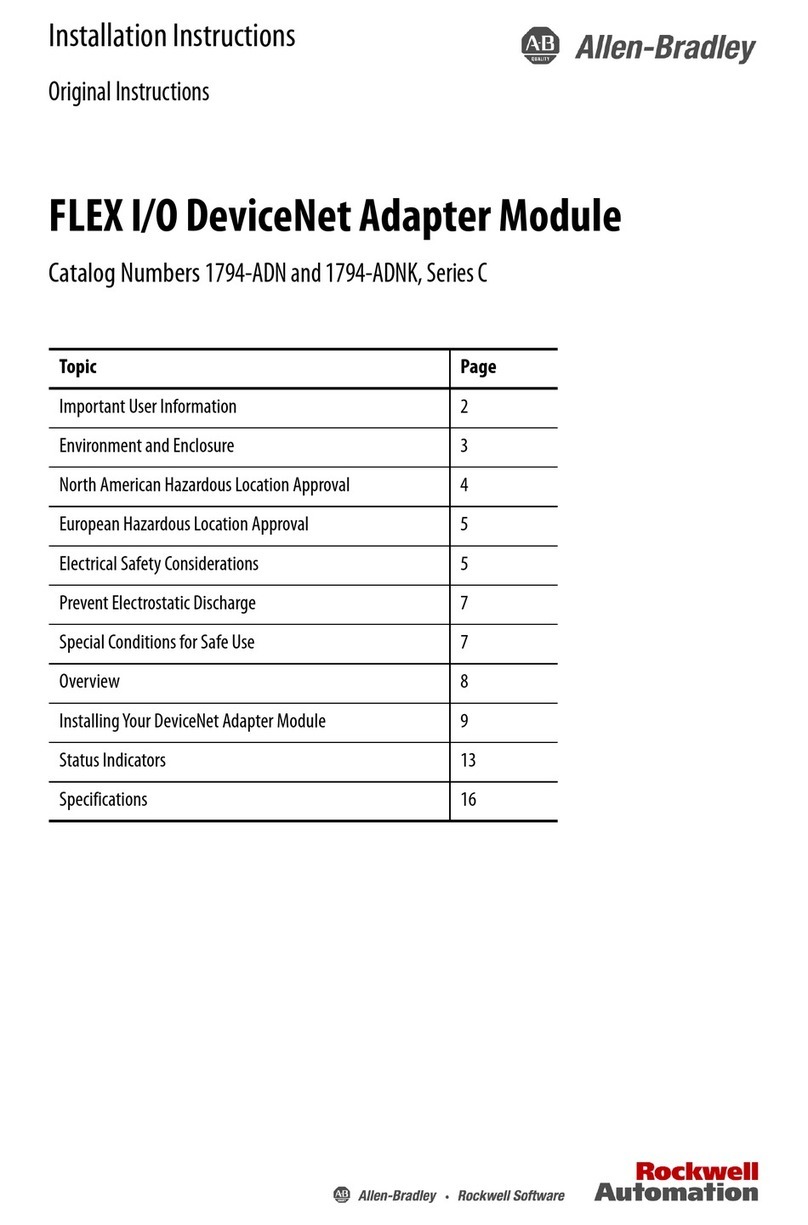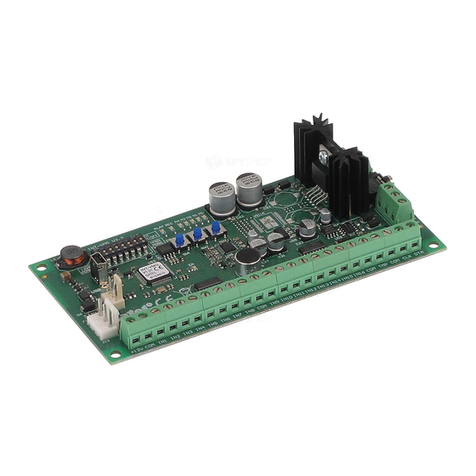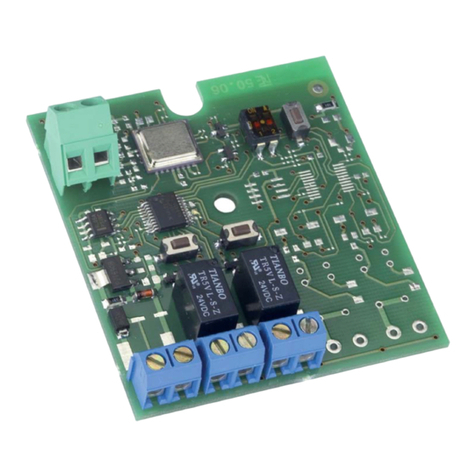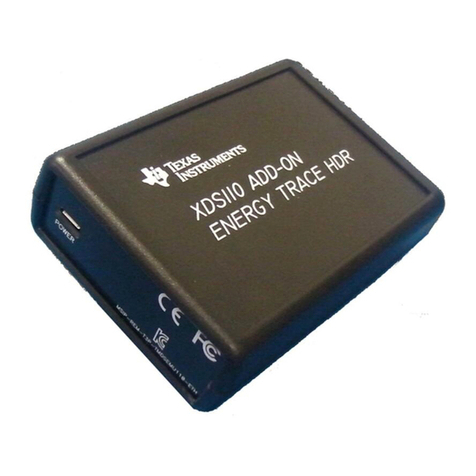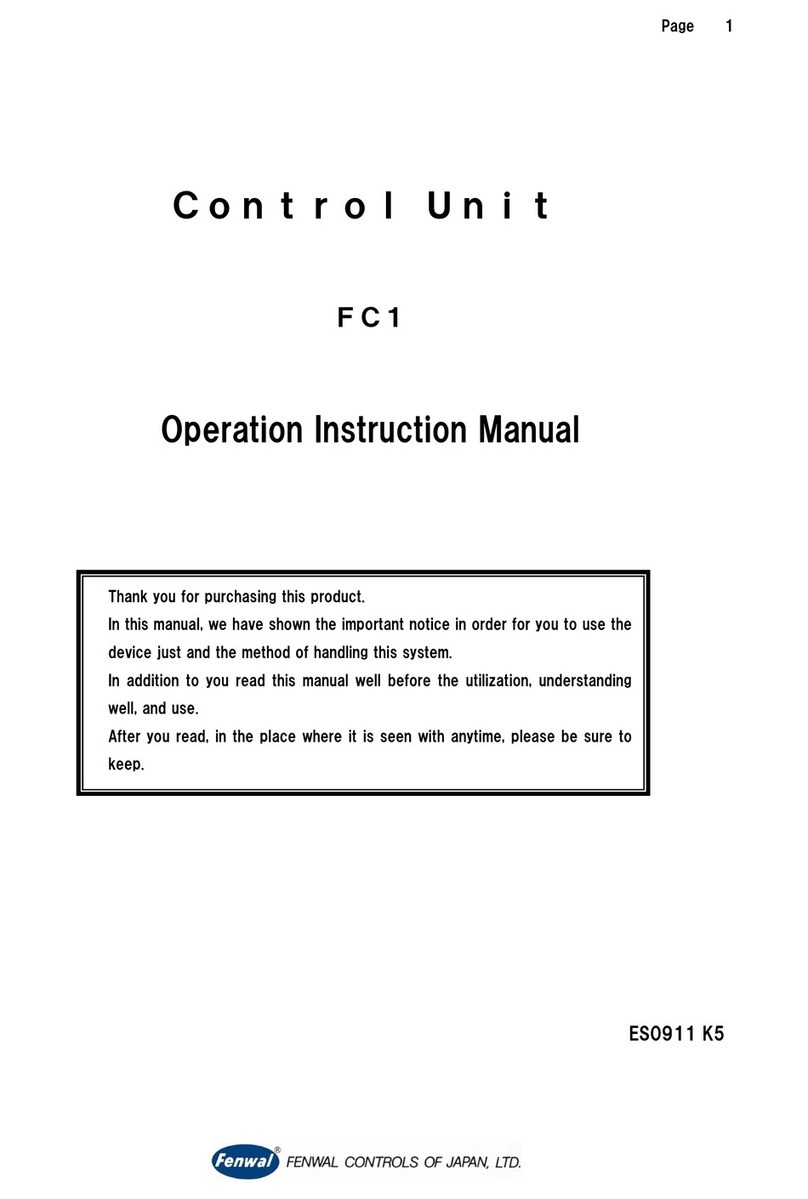AUREL RTX-24EM-HP Series User manual

The technical characteristics can change without notice. AUR°EL S.p.A doesn’t assume the respons
AUR°EL S.p.A. Via Foro dei Tigli, -
7015 Modigliana (FC)
Tel.: +3905 69 112 –
Fax: +3905 69 1660
http://www.aurel.it
Contents
1. General description
................................
1.1 Features
................................
2. RTX-24EM-HP pin out
................................
3. Reference Docu entation
................................
4.
European Reference Standards
5. Overview
................................
5.1 RF transceiver
................................
5.1.1
Frequency synthesizer / Phase
5.1.2 Receiver
................................
5.1.3 Trans itter
................................
6. Electrical characteristics
................................
6.1
General Operating Conditions
6.2 Supply currents on Vcc
................................
6.3 RF characteristics
................................
7. Functional odes
................................
7.1 Power Down
................................
7.2 Standby Mode
................................
7.3 RAM2 Init
................................
7.4 Auto-cal
................................
7.5 Trans it
................................
7.6 Receive
................................
8. Digital interface
................................
8.1 SPI operations
................................
8.2 SPI Co ands
................................
The technical characteristics can change without notice. AUR°EL S.p.A doesn’t assume the respons
i
bility to the damages caused by an improper us
7015 Modigliana (FC)
– ITALY
Fax: +3905 69 1660
................................
................................
................................
................................
................................................................
................................
................................
................................
................................
................................
................................
................................
European Reference Standards
................................................................
................................
................................
................................................................
................................
................................
................................
................................
Frequency synthesizer / Phase
-Locked Loop (PLL) ................................
................................
................................
................................................................
................................
................................
................................
................................
................................
................................
................................
General Operating Conditions
................................................................
................................
................................
................................
................................
................................
................................
................................
................................
................................
................................
................................
................................
................................
................................
................................
................................
................................
................................................................
................................
................................
................................................................
................................
................................
................................................................
................................
................................
................................................................
................................
................................
................................
................................
................................
................................
................................
................................
................................
................................
RTX-24EM-HP
User guide
bility to the damages caused by an improper us
e of the device.
12/11/2019 - Rev. A
Page 1
................................
..................... 3
................................
..... 3
................................
...................... 4
................................
............... 5
................................
........ 5
................................
........ 5
................................
............................. 6
................................
..... 6
................................
.. 6
................................
............................. 6
................................
.................. 9
................................
..... 9
................................
................ 9
................................
...................... 10
................................
......................... 11
................................
............................. 11
................................
.......................... 12
................................
. 12
................................
.... 12
................................
... 12
................................
..... 12
................................
............................ 13
................................
........................... 13
................................
.......................... 15

RTX-24EM-HP
User guide
The technical characteristics can change without notice. AUR°EL S.p.A doesn’t assume the responsibility to the damages caused by an improper use of the device.
AUR°EL S.p.A. Via Foro dei Tigli, - 7015 Modigliana (FC) – ITALY 12/11/2019 - Rev. A
Tel.: +3905 69 112 – Fax: +3905 69 1660 Page 2
http://www.aurel.it
9. Progra ing interface ................................................................................................................. 19
9.1 RAM2, RAM1 reset .................................................................................................................... 19
9.2 RAM2 Initialization ................................................................................................................... 19
9.3 Internal PTAT current auto calibration ....................................................................................... 19
9.4 VCO auto calibration ................................................................................................................. 20
9.5 Channel Data Rate .................................................................................................................... 21
9.5.1 Bit stuffing ........................................................................................................................... 21
9.6 RF operating frequency ............................................................................................................. 22
9.7 Address byte ............................................................................................................................. 22
9.8 TX Power level .......................................................................................................................... 23
9.9 Packet (TX and RX) payload ....................................................................................................... 23
9.9.1 Mode payload size in the header............................................................................................ 23
9.9.2 Mode payload size in RAM2 ................................................................................................... 23
9.10 Register TXFIFO and RXFIFO ................................................................................................... 24
9.11 Received Signal Strength Indicator (RSSI) ............................................................................... 24
9.12 Frequency error register : DFT_Mes[7:0] ................................................................................ 25
10 Trans ission progra ing flow ............................................................................................... 25
10.1 Trans ission flow, ode payload size defined in header ........................................................ 25
10.2 Trans ission flow, ode payload size defined in RAM2 ......................................................... 26
11 Reception progra ing flow .................................................................................................... 27
11.1 Reception flow, ode payload size defined in header ............................................................. 27
11.2 Reception flow, ode payload size defined in RAM2 .............................................................. 28
12 RAM2 Registers......................................................................................................................... 29
13 RF Packet for at ...................................................................................................................... 37
14 Device usage ............................................................................................................................. 38
15 Revision History ........................................................................................................................ 38

RTX-24EM-HP
User guide
The technical characteristics can change without notice. AUR°EL S.p.A doesn’t assume the responsibility to the damages caused by an improper use of the device.
AUR°EL S.p.A. Via Foro dei Tigli, - 7015 Modigliana (FC) – ITALY 12/11/2019 - Rev. A
Tel.: +3905 69 112 – Fax: +3905 69 1660 Page 3
http://www.aurel.it
1. General description
The RTX-24EM-HP is a 1.5kbps to 72kbps low-power, low-voltage 2.4 Hz ISM band RF transceiver module
ideal for battery operated wireless applications such as wireless sensors and control.
The RTX-24EM-HP module embeds the EM Microelectronic EM9209 Radio SOC device. Furthermore it
embeds a power amplifier (PA) and a Low Noise Amplifier (LNA) that allow to increase the RF output power
and the sensitivity compared to the Aurel RTX-24EM modules.
The EM9209’s built in custom low power microcontroller supports the proprietary wireless protocol links in
the license free 2.4000 Hz to 2.4835 Hz ISM band. It includes a low-IF receiver architecture and uses FSK
modulation. A SPI interface provides a simple control of the baseband using an external host
microcontroller.
The EM9209 provides two communication modes with normal sensitivity (NS) or high sensitivity (HS) and
programmable bit rate from 1.5kbps to 72kbps.
The RTX-24EM-HP module is pin to pin compatible with Aurel new model RTX-24EM and previous models
XTR CYP 2.4 Hz, XTR VF 2.4 LP, XTR VF 2.4PA-LNA and XTR VF 2.4 HP.
The RTX-24EM-HP module is available in the following variants:
Aurel Code Tec nical name reference Description
650201515 AUREL RTX-24EM-HP-AI/H Integrated PIFA antenna, horizontal mounting
650201516 AUREL RTX-24EM-HP-AI/V Integrated PIFA antenna, vertical mounting
650201517 AUREL RTX-24EM-HP-AE/H UFL connector for external antenna, horizontal mounting
650201518 AUREL RTX-24EM-HP-AE/V UFL connector for external antenna, vertical mounting
1.1 Features
•Low voltage: 2,0 to 3,6 V
•RX mode: 15mA in RX normal sensitivity mode (NS), 16mA in RX high sensitivity mode (HS).
•TX mode: 40mA at 10dBm, 100mA at +20dBm.
•< 2µA in power down mode.
•High performance:
-119dBm sensitivity at 1.5kbps,
Programmable output power up to +20dBm
•Operating temperatures: -20°C to +70°C
•Flexible interface:
SPI interface for microcontrollers
Fully programmable link layer

The technical characteristics can change without notice. AUR°EL S.p.A doesn’t assume the respons
AUR°EL S.p.A. Via Foro dei Tigli, -
7015 Modigliana (FC)
Tel.: +3905 69 112 –
Fax: +3905 69 1660
http://www.aurel.it
2. RTX-24EM-HP
pin out
Pin Description
1 ND ND connection.
2 VCC
Positive Voltage supply connection
3 IRQ Interrupt output
signal
4 nRESET
1
Reset signal (ac
tive low
forced to low level, the device is resetted and in power down mode.
5 MOSI
Master Out Slave In. SPI signal
6 SS
Slave Select signal (active high)
7 SCK SPI clock
from the external host microcontroller
8 MISO Master In
Slave Out. SPI signal from the radio module
9 ND ND connection.
10 ENABLE
1
Enable Pin
(active high)
mode.
Note 1:
nReset (Pin 4) and ENABLE (Pin 10) are present on the XTR
both XTR CYP 2.4 Hz and XTR VF 2.4 Aurel modules. They are used for the same functionality (force the
HP
in power down mode) and they are
It is therefore recommended to manage only one of them with the host microcontroller.
Pin 1
The technical characteristics can change without notice. AUR°EL S.p.A doesn’t assume the respons
i
bility to the damages caused by an improper us
7015 Modigliana (FC)
– ITALY
Fax: +3905 69 1660
pin out
ND 1
IRQ 3
MOSI 5
SCK 7
ND 9
NC 11
Figure 1
Positive Voltage supply connection
.
signal
for external host microcontroller.
tive low
) from the external host microcontroller
to the radio module
forced to low level, the device is resetted and in power down mode.
Master Out Slave In. SPI signal
from the external host microcontroller
to the radio module.
Slave Select signal (active high)
from external host microcontroller to the radio module
from the external host microcontroller
to the radio module.
Slave Out. SPI signal from the radio module
to the external host microcontroller
(active high)
.
If this pin is forced to low level, the device is resetted and in power down
Table 1: Pin description
nReset (Pin 4) and ENABLE (Pin 10) are present on the XTR
-
24EM to maintain the hardware compatibility with
both XTR CYP 2.4 Hz and XTR VF 2.4 Aurel modules. They are used for the same functionality (force the
both connected to EN_RE pin of EM9209 radio SoC.
It is therefore recommended to manage only one of them with the host microcontroller.
RTX-24EM-HP
User guide
bility to the damages caused by an improper us
e of the device.
12/11/2019 - Rev. A
Page
2 VCC
4 nRESET
6 SS
8 MISO
10 ENABLE
12 NC
to the radio module
. If this pin is
to the radio module.
from external host microcontroller to the radio module
.
to the external host microcontroller
.
If this pin is forced to low level, the device is resetted and in power down
24EM to maintain the hardware compatibility with
both XTR CYP 2.4 Hz and XTR VF 2.4 Aurel modules. They are used for the same functionality (force the
RTX-24EM-
both connected to EN_RE pin of EM9209 radio SoC.

RTX-24EM-HP
User guide
The technical characteristics can change without notice. AUR°EL S.p.A doesn’t assume the responsibility to the damages caused by an improper use of the device.
AUR°EL S.p.A. Via Foro dei Tigli, - 7015 Modigliana (FC) – ITALY 12/11/2019 - Rev. A
Tel.: +3905 69 112 – Fax: +3905 69 1660 Page 5
http://www.aurel.it
3. Reference Documentation
The RTX-24EM-HP module embeds the EM Microelectronic EM9209 Radio SOC device.
For information on technical details of the Radio SOC such as register settings, timing, application interfaces
and clocking refer to the device data sheet available on the website:
http://www.emmicroelectronic.com
Here below the link of the documentation:
http://www.emmicroelectronic.com/products/wireless-rf/proprietary-protocols/em9209
4. European Reference Standards
The module RTX-24EM-HP complies with the European standards EN 300 440 and EN 301 489-3 with
maximum power supply of 3.6V and with RF power setting as described in section 9.8 (Tx Power level).
The transceiver must be supplied by a very low voltage safety source protected against short circuits.
The usage of the transceiver is foreseen inside enclosures that assure the overcoming of the rule EN 61000-
4-2, not directly applicable to the module itself.
This device is compliant with EN 62479, connected to the electromagnetic field human exposition, with RF
power setting as described in section 9.8 (Tx Power level). ".
5. Overview
The RTX-24EM-HP is a low-voltage 2.4 Hz RF transceiver ideal for battery operated wireless applications.
The EM9209 employs a FSK modulation scheme which is directly applied to the 2.4 Hz transmitter. RF
output power is digitally tuned over up to +20dBm to optimize current consumption and transmitted power
for the application. The on-air transmission rate is digitally programmable from 1.5kbps to 72kbps.
The RTX-24EM-HP features a fully integrated low-noise, high-sensitivity 2.4 Hz front end with -119dBm at
1.5kbps in high sensitivity mode. The integration of an agile frequency synthesizer makes the device well
suited for frequency hopping applications.
The major blocks that build the EM9209 are:
1. the RF transceiver;
2. the digital interface including custom microcontroller;
3. the power management circuitry.
An overview of each of these blocks is provided in this section.

RTX-24EM-HP
User guide
The technical characteristics can change without notice. AUR°EL S.p.A doesn’t assume the responsibility to the damages caused by an improper use of the device.
AUR°EL S.p.A. Via Foro dei Tigli, - 7015 Modigliana (FC) – ITALY 12/11/2019 - Rev. A
Tel.: +3905 69 112 – Fax: +3905 69 1660 Page 6
http://www.aurel.it
5.1 RF transceiver
The highly integrated multi-channel RF transceiver is ideal for wireless applications in the world-wide,
license-free, ISM frequency band at 2.4000 Hz to 2.4835 Hz. Its robust low-IF architecture and direct FSK
modulation scheme are designed for proprietary communication protocols. The EM9209 supports data
transmission rates of 1.5kbps to 72kbps for up to 20 channels.
The RF transceiver can be programmed to one of two primary modes:
Transmit mode: the entire transmit-chain is active and the digital baseband data can be up-converted to a
2.4 Hz FSK modulated signal.
Receive mode: the frequency synthesizer and the entire receive-chain are active and ready to receive a
packet.
The RF transceiver consists of three major subsystems:
•the frequency synthesizer/phase-locked loop (PLL)
•the receiver
•the transmitter.
Each of these is described below.
5.1.1 Frequency synt esizer / P ase-Locked Loop (PLL)
The frequency synthesizer provides an accurate, low jitter (-100 dBc @ 1MHz offset) 2.4 Hz RF signal used
for both up conversion (in Transmit mode) and down-conversion (in Receive mode). Up to 20 different RF
channel frequencies can be synthesized in high sensitivity mode. Additionally, the PLL supports direct FSK
modulation for use in the Transmit mode.
An auto-calibration mechanism is included in the PLL to center the VCO control voltage.
5.1.2 Receiver
The receiver achieves high sensitivity (-115dBm at 1.5kbps in high sensitivity (HS) mode) and supports a
wide input signal range (up to +10dBm at 2.4 Hz). It is comprised of a low noise amplifier (LNA), followed
by a down-conversion mixer and an IF-filter. The output of the IF-filter is fed to a limiting-amplifier which
feeds the digital FSK demodulators (normal and high sensitivity).
The receiver includes a Received Signal Strength Indicator (RSSI), which can measure the down-converted
RF power after the IF filter. The average power on the channel or burst power of a packet can be read via
the SPI after the single-shot RSSI measurement has been completed (see Section 9.11).
5.1.3 Transmitter
The transmitter consists of an FSK modulator with a programmable bit-rate (1.5kbps to 72kbps) which is
included in the frequency synthesizer and a programmable Power Amplifier (PA) output stage.

The technical characteristics can change without notice. AUR°EL S.p.A doesn’t assume the respons
AUR°EL S.p.A. Via Foro dei Tigli, -
7015 Modigliana (FC)
Tel.: +3905 69 112 –
Fax: +3905 69 1660
http://www.aurel.it
5.2 Digital interface
The Digital Interface is shown in Figure 2. It includes:
•A four pin
Serial Peripheral Interface (SPI).
•A Custom microc
ontroller with built in CODEC, FIFO
•Two RAMs
(Program and Registers).
•One ROM
and its Boot machine.
The SPI can operate at up to 10MHz for reading and writing to the configuration (
(RAM1) memories.
The custom microc
ontroller drives an interrupt pin (
of the EM9209 (e.g.,
that a packet has bee
functionality allows the host micro
controller to
mode.
The RAM memories are reset through internal POR.
5.2.1 Baseband microcontroller
The baseband custom micro
controller is the central
modes of the EM9209 through
RAM2
RXFIFO
operations. Furthermore, it configures
from the demodulator (what is commonly referred to as the link
execute different subrouti
nes which are handling
Those different subroutines are stored in a
and activated through SPI interface.
There are various communication subroutines available for EM9209 (either high sensitivity or normal
sensitivity). Most
communication subroutines will set the EM9209 frequency
an
d turn on the Receiver. A simple
back to Standby mode with crystal oscillator enabled.
The technical characteristics can change without notice. AUR°EL S.p.A doesn’t assume the respons
i
bility to the damages caused by an improper us
7015 Modigliana (FC)
– ITALY
Fax: +3905 69 1660
The Digital Interface is shown in Figure 2. It includes:
Serial Peripheral Interface (SPI).
ontroller with built in CODEC, FIFO
’s and timers.
(Program and Registers).
and its Boot machine.
The SPI can operate at up to 10MHz for reading and writing to the configuration (
ontroller drives an interrupt pin (
IRQ
) which can be programmed to indicate the status
that a packet has bee
n sent or received or that auto
calibration has finished). This
controller to
complete other operations or even enter its own low power
The RAM memories are reset through internal POR.
Figure 2: Digital interface
controller is the central
digital control system of the EM9209. It manages all
RAM2
register memory and controls the RF transceiver and
operations. Furthermore, it configures
digital data for transmission and processes packets received
from the demodulator (what is commonly referred to as the link
layer). The micro
nes which are handling
auto-calibration,
communication (and FIFO control).
Those different subroutines are stored in a
ROM memory and are loaded in the
RAM1
and activated through SPI interface.
There are various communication subroutines available for EM9209 (either high sensitivity or normal
communication subroutines will set the EM9209 frequency
synthesizer in Receive mode
d turn on the Receiver. A simple
communication subroutine allows the EM9209 to transmit and to go
back to Standby mode with crystal oscillator enabled.
RTX-24EM-HP
User guide
bility to the damages caused by an improper us
e of the device.
12/11/2019 - Rev. A
Page 7
The SPI can operate at up to 10MHz for reading and writing to the configuration (
RAM2) and program
) which can be programmed to indicate the status
calibration has finished). This
complete other operations or even enter its own low power
digital control system of the EM9209. It manages all
register memory and controls the RF transceiver and
TXFIFO or
digital data for transmission and processes packets received
layer). The micro
controller is able to
communication (and FIFO control).
RAM1
program memory
There are various communication subroutines available for EM9209 (either high sensitivity or normal
synthesizer in Receive mode
communication subroutine allows the EM9209 to transmit and to go

RTX-24EM-HP
User guide
The technical characteristics can change without notice. AUR°EL S.p.A doesn’t assume the responsibility to the damages caused by an improper use of the device.
AUR°EL S.p.A. Via Foro dei Tigli, - 7015 Modigliana (FC) – ITALY 12/11/2019 - Rev. A
Tel.: +3905 69 112 – Fax: +3905 69 1660 Page 8
http://www.aurel.it
5.2.1.1 In Communication mode:
The TXFIFO can be written at any time by the host microcontroller. When the SPI command Send_TXFIFO is
activated, the internal microcontroller will transmit all the content of the TXFIFO (or, depending on the
subroutine used, a predefined number of bytes, stored in RAM2) on the selected channel at the selected
data rate.
The EM9209 will wait for any packet on the selected channel at the selected data rate. When a packet is
received, the EM9209 examines the packet size header, and stores the corresponding number of bytes in
the RXFIFO (or, depending on the subroutine used, a predefined number of bytes, stored in RAM2) and sets
the IRQ signal Pin high.
The EM9209 RXFIFO and RXFIFO_Size can be read through SPI.
The IRQ bit can be reset through the SPI Clear_IRQ command.
5.2.1.2 In Auto-calibration mode:
The center frequency of the VCO is tuned for a chosen channel frequency.
The result of the auto-calibration is directly written in the VCO center frequency register VCO_Code[3:0].
5.2.1.3 In Standby mode:
The EM9209 control registers (RAM2) can be read or written.
5.2.1.4 In RAM2 initialization mode
The EM9209 configures it’s RAM2 to default value and sets IRQ pin high when this action is finished.
5.3 Power management
The power management system of the EM9209 provides the necessary supplies, voltage and current
references for reliable operation in all modes. It includes low drop-out voltage regulators (LDO) for the RF
transceiver.
5.3.1 RF transceiver supply
There are 2 on-chip regulators, for the transceiver and the synthesizer’s analog part, which supply all
analog circuits in the RF transceiver. The voltage reference for these regulators is derived from a low noise
bandgap circuit. The regulators are enabled individually when needed.
5.3.2 Digital supply
A low power regulator generates the supply for all digital parts in the system (base-band, frequency
synthesizer logic and demodulator).
5.3.3 Bias generator
The EM9209 features a bias generator that utilizes a temperature compensated on-chip bandgap reference
and a calibrated, temperature dependent, PTAT reference current.

RTX-24EM-HP
User guide
The technical characteristics can change without notice. AUR°EL S.p.A doesn’t assume the responsibility to the damages caused by an improper use of the device.
AUR°EL S.p.A. Via Foro dei Tigli, - 7015 Modigliana (FC) – ITALY 12/11/2019 - Rev. A
Tel.: +3905 69 112 – Fax: +3905 69 1660 Page 9
http://www.aurel.it
6. Electrical c aracteristics
6.1 General Operating Conditions
Parameters
Symbol
Min
Typ
Max
Unit
Supply Voltage
V
CC
2.0 3.0 3.6 V
Temperature Range T
A
-20 +70 °C
Table 2: General Operating condition
6.2 Supply currents on Vcc
Operating
Mode Notes Symbol Conditions Min Typ Max Unit
Power Down I
CC_PWDOWN
ENABLE (Pin 10) or nRESET (Pin 4) = 0 2 µA
Standby I
CC_STDBY
ENABLE (Pin 10) or nRESET (Pin 4) = 1
and 26MHz crystal oscillator disabled 140 µA
Auto-
calibration I
AUTOCAL
Auto-calibration mode 4.2 mA
Transmit 1
I
CC_TXEU
P
OUT
= 10 dBm, 2440MHz 40 mA
I
CC_TXMAX
P
OUT
= 20 dBm, 2440MHz 100 mA
Receive
Normal
sensitivity,2 I
CC_RXNS
2440 MHz 15 mA
High
sensitivity,2 I
CC_RXHS
2440 MHz 16 mA
Table 2: Supply currents on V
CC
Note 1: See Table 10 for further clarifications and details.
Note 2: for the version with external antenna the current consumption is measured with 50 ohm load connected to UFL
connector. Connecting an antenna the current consumption may be different.

RTX-24EM-HP
User guide
The technical characteristics can change without notice. AUR°EL S.p.A doesn’t assume the responsibility to the damages caused by an improper use of the device.
AUR°EL S.p.A. Via Foro dei Tigli, - 7015 Modigliana (FC) – ITALY 12/11/2019 - Rev. A
Tel.: +3905 69 112 – Fax: +3905 69 1660 Page 10
http://www.aurel.it
6.3 RF c aracteristics
Parameter Conditions Notes
Symbol Min Typ Max Unit
General RF conditions
Operating frequency
f
op
2400
2484
MHz
Modulation
m
od
FSK
Data rate
HS 1.5
1
,2
DR1
1.2
1.5
2
kbps
HS 3
1
,2
DR2
2
3
4
kbps
HS 6
1
,2
DR3
4
6
8
kbps
HS 12
1
,2
DR4
8
12
16
kbps
N
S 24
1
,2
DR5
24
kbps
N
S 48
1
,2
DR6
48
kbps
N
S 72
1
,2
DR7
72
kbps
Channel spacing F
CHW
4 MHz
Transmitter Operation
RF Output power on UFL
connector
(
RTX-24EM-HP-AE/H and RTX-
24EM-HP-AE/V versions)
See note 4 3,4 P
RFMAX
+20 dBm
See note 4 3,4 P
RFEU
+10 dBm
E.R.P. RF power
(
RTX-24EM-HP-AI/H and RTX-
24EM-HP-AI/V versions)
See note 4 3,4 P
ERPMAX
+18 dBm
See note 4 3,4 P
ERPEU
+9 dBm
Receiver
Operation
Sensitivity
HS 1.5 1 S
HS1.
5
-119 dBm
HS 3 1 S
HS
3
-117 dBm
HS 6 1 S
HS
6
-115 dBm
HS 12 1 S
HS
12
-111 dBm
NS 24 1 S
N
S
24
-104 dBm
NS 48 1 S
N
S
48
-102 dBm
NS 72 1 S
N
S
72
-101 dBm
Table 5: RF c aracteristics
Note 1: HS = High Sensitivity , NS = Normal Sensitivity.
Note 2: Data rate “on air”. In case of more than 4 consecutive identical symbols, bit stuffing can reduce this
data rate from 100% down to 80% of this value.
Note 3 : to be in compliance with European standard EN 300 440, the maximum radiated power is +10dBm.
Note 4: See Table 10 for more detailed power amplifier settings
.

The technical characteristics can change without notice. AUR°EL S.p.A doesn’t assume the respons
AUR°EL S.p.A. Via Foro dei Tigli, -
7015 Modigliana (FC)
Tel.: +3905 69 112 –
Fax: +3905 69 1660
http://www.aurel.it
7. Functional modes
This section describes the
operational modes of the
give
n in Figure 3, and each mode is
loading and running the corresponding subroutine. Most transitions are immediate, shorter than t
transactions, except for
those marked in the figure and listed in T
Figure
Notes:
1. See SPI Operation chapter.
7.1 Power Down
T
his mode is enabled when ENABLE
and the voltage reference are disabled and the supply current
The technical characteristics can change without notice. AUR°EL S.p.A doesn’t assume the respons
i
bility to the damages caused by an improper us
7015 Modigliana (FC)
– ITALY
Fax: +3905 69 1660
operational modes of the
RTX-24EM-HP module
. An example state diagram is
described below. The SPI interface is us
ed to set or change the mode by
loading and running the corresponding subroutine. Most transitions are immediate, shorter than t
those marked in the figure and listed in T
able 5: Timing
Characteristics.
Figure
1: RTX-24EM-HP Functiona Overview
his mode is enabled when ENABLE
(Pin 10) or nRESET (Pin 4) is tied to
ND. EM9209 internal
and the voltage reference are disabled and the supply current
is < 2uA.
RTX-24EM-HP
User guide
bility to the damages caused by an improper us
e of the device.
12/11/2019 - Rev. A
Page 11
. An example state diagram is
ed to set or change the mode by
loading and running the corresponding subroutine. Most transitions are immediate, shorter than t
he SPI
Characteristics.
ND. EM9209 internal
regulators

RTX-24EM-HP
User guide
The technical characteristics can change without notice. AUR°EL S.p.A doesn’t assume the responsibility to the damages caused by an improper use of the device.
AUR°EL S.p.A. Via Foro dei Tigli, - 7015 Modigliana (FC) – ITALY 12/11/2019 - Rev. A
Tel.: +3905 69 112 – Fax: +3905 69 1660 Page 12
http://www.aurel.it
7.2 Standby Mode
When ENABLE (Pin 10) or nRESET (Pin 4) is high the RTX-24EM-HP wakes up in standby mode at about t
PD-
STBY
seconds (see Table 6). The SPI register memory is then set to 0 and the SPI waits for the host
programming. In standby mode all internal circuits are disabled and can be accessed, including the crystal
oscillator. The host microcontroller can program the RTX-24EM-HP for any operational mode.
7.3 RAM2 Init
The RTX-24EM-HP can be configured using a 16 registers memory RAM2. RAM2 is resetted to 0 when
ENABLE (Pin 10) or nRESET (Pin 4) is set from ND to Vcc. In order to avoid 16 different SPI write cycles, a
dedicated subroutine located at ROM_BOOT_Address = 0 will initialize most RAM2 addresses to their
default values. This procedure takes about t
RAM2_INIT
seconds (see Table 6).
7.4 Auto-cal
VCO center frequency
The RTX-24EM-HP frequency synthesizer has an Auto-calibration mode that must be run periodically by the
host microcontroller. This keeps the channel frequency and FSK modulator operating within specification.
Analog components in this block are sensitive to temperature variation, therefore performance may
degrade or the link may fail if not run periodically. Typically, Auto-calibration should be run when changing
channels or if the operating temperature changes by more than 10 to 20 °C. This procedure takes about
t
VCO_CAL
seconds (see Table 6).
PTAT reference current
The internally generated PTAT current can be self calibrated using an internal PTAT generator.
This
procedure takes about t
PTAT_CAL
seconds (see Table 6).
7.5 Transmit
In Transmit mode, the RTX-24EM-HP outputs a FSK-modulated packet, it returns to receive mode or
standby mode with the crystal oscillator enabled and sets the interrupt pin IRQ high. Depending on the
choosen subroutine the RTX-24EM-HP can transmit the whole TXFIFO (till TXFIFO size = 0) or a predefined
number of bytes programmed in RAM2.
Transmit mode is activated from Receive mode or from Standby mode (with crystal oscillator enabled)
using the SPI command Send_TXFIFO.
7.6 Receive
The RTX-24EM-HP in receive mode waits for a FSK-modulated packet. After receiving a suitable packet it
sets the IRQ pin high. Depending on the choosen subroutine, it can either read the size of the packet to be
received in the header or in RAM2.

RTX-24EM-HP
User guide
The technical characteristics can change without notice. AUR°EL S.p.A doesn’t assume the responsibility to the damages caused by an improper use of the device.
AUR°EL S.p.A. Via Foro dei Tigli, - 7015 Modigliana (FC) – ITALY 12/11/2019 - Rev. A
Tel.: +3905 69 112 – Fax: +3905 69 1660 Page 13
http://www.aurel.it
Parameter Symbol Min Typ Max Unit
Power Down Standby mode (crystal oscillator OFF) t
PD-STBY
100 µs
Standby mode (crystal OFF) Standby mode Crystal oscillator ON t
STBY-OSC_ON
900 µs
RAM2 Init
t
RAM2_INIT
200 µs
VCO Auto calibration
t
VCO_CAL
340 500 µs
PTAT current Auto calibration
t
PTAT_CAL
150 µs
Standby mode crystal oscillator ON TX/RX mode t
STBY-RF
0.8 1 ms
Table 6: Timing c aracteristics (Vcc = 3V)
8. Digital interface
The RTX-24EM-HP can be controlled with a 4-wire serial peripheral interface (SPI). The four wires are:
SS Slave Select
SCK Serial Clock
MOSI Serial data in to RTX-24EM-HP
MISO Serial data out of RTX-24EM-HP
The RTX-24EM-HP has a programmable interrupt pin (IRQ).
All internal enables signals and parameters of the RTX-24EM-HP are mapped in a small 16x12 bits memory
called RAM2. RAM2 can directly be accessed through SPI and no crystal clock is required.
8.1 SPI operations
The SPI interface is used to read from and to write all the register of the EM9209 embedded on the RTX-
24EM-HP module.
SPI operations allow various accesses:
•Memories write and read actions
•EM9209 internal microcontroller commands
•Loading of subroutines in RAM1
A SPI transaction is defined as all of the activity on SCK, MOSI and MISO that occurs between one rising
edge of SS and its next falling edge. All the data shall be sent starting with the MSB first.
Not all the commands are encoded on a number of bits multiple of 8. Additional clocks can be sent after
the command with no impact on the command decoding. Thus, the EM9209 can be accessed without
problems using an 8-bit wide SPI interface. Each change to MOSI is latched on the rising edge of SCK, and

RTX-24EM-HP
User guide
The technical characteristics can change without notice. AUR°EL S.p.A doesn’t assume the responsibility to the damages caused by an improper use of the device.
AUR°EL S.p.A. Via Foro dei Tigli, - 7015 Modigliana (FC) – ITALY 12/11/2019 - Rev. A
Tel.: +3905 69 112 – Fax: +3905 69 1660 Page 1
http://www.aurel.it
each change to MISO is available on the falling edge of SCK. A timing diagram is shown in Figure 2.
Complete timing specifications are given in Table .
Figure 2: SPI timing diagram
Symbol
Parameters Min Max Units
t
DS
MOSI to SCK Setup 20 ns
t
DH
SCK to MOSI hold 20 ns
t
SD
SS to MISO Valid 30 ns
t
CD
SCK to MISO Valid 30 ns
t
SCKL
SCK low time 40 ns
t
SCKH
SCK high time 40 ns
f
sck
SCK frequency 0 10 MHz
t
CS
SS to SCK Setup 20 ns
t
CH
SCK to SS Hold 20 ns
t
CSWH
SS Inactive Time 20 ns
t
CZ
SS to MISO High Z 30 ns
Table 7: SPI timing values
For each SPI command, MISO will always give three status bits on the first three SCK cycles.
•As soon as SS goes high, the first status bit (Status[2]) is available on the MISO terminal. This bit is
called “Previous_FIFO_Order_Pending” and is high when the microcontroller has not yet processed
the previous FIFO order. This process takes a maximum of 8 clock cycles and starts on the falling
edge of the SS signal.
•Status[1] reflects the inactivity of the crystal oscillator (0: running).

RTX-24EM-HP
User guide
The technical characteristics can change without notice. AUR°EL S.p.A doesn’t assume the responsibility to the damages caused by an improper use of the device.
AUR°EL S.p.A. Via Foro dei Tigli, - 7015 Modigliana (FC) – ITALY 12/11/2019 - Rev. A
Tel.: +3905 69 112 – Fax: +3905 69 1660 Page 15
http://www.aurel.it
•Status[0] shows the unlock state of the 2.4 Hz LO frequency synthesizer (0: main LO PLL locked).
For connect transmission operation, status[2..0] must be equal to ‘000’.
8.2 SPI Commands
Read_RXFIFO
This command returns the next byte out of the RXFIFO. It also returns the total number of bytes currently
available in the RXFIFO (including the one being read).
This SPI operation works together with the internal microcontroller and is functional only when this latter
has been started (SPI command Start_Micro) and when the master clock is active (Crystal oscillator must be
enabled). The order is taken into account only when SS signal goes down and the RXFIFO size information
are sampled when SS is low.
Figure 3: Timing of t e SPI Read_RXFIFO / Write_TXFIFO command
Write_TXFIFO
This command writes a byte to the TXFIFO. It also returns the total number of bytes in both FIFOs, not
including this one. This SPI operation works together whit the internal microcontroller and is functional
only when this latter has been started (SPI command Start_Micro) and when the master clock is active
(Crystal oscillator must be enabled). The order is taken into account only when SS signal goes down and the
FIFO size information are sampled by mck when SS is low.

RTX-24EM-HP
User guide
The technical characteristics can change without notice. AUR°EL S.p.A doesn’t assume the responsibility to the damages caused by an improper use of the device.
AUR°EL S.p.A. Via Foro dei Tigli, - 7015 Modigliana (FC) – ITALY 12/11/2019 - Rev. A
Tel.: +3905 69 112 – Fax: +3905 69 1660 Page 16
http://www.aurel.it
Read_RXFIFO_Size
This command reads the total number of bytes currently available in the RXFIFO.
Read_TXFIFO_Size
This command reads the total number of bytes currently available in the TXFIFO.
Read_RAM1
This command reads the 12 bits word from the specified address (6bits) of RAM1. This command will put
the microcontroller on hold and reset state, until last bit has been processed.
Write_RAM1
This command writes a 12 bits word to the specified address (6 bits) of RAM1. This command will put the
microcontroller on hold and reset state until last bit has been processed.
Read_RAM2
This command reads the 12 bits word to the specific address (4 bits) of RAM2. This command will put the
microcontroller on hold until last bit has been processed.
Write_RAM2
This command writes a 12 bits word to the specified address (4 bits) of RAM2. This command will put the
microcontroller on hold until last bit has been processed.

RTX-24EM-HP
User guide
The technical characteristics can change without notice. AUR°EL S.p.A doesn’t assume the responsibility to the damages caused by an improper use of the device.
AUR°EL S.p.A. Via Foro dei Tigli, - 7015 Modigliana (FC) – ITALY 12/11/2019 - Rev. A
Tel.: +3905 69 112 – Fax: +3905 69 1660 Page 17
http://www.aurel.it
Reset_Micro
This instruction allows an asynchronous reset of the microcontroller. Never use this command when the
micro is running (RAM2 and FIFO’s content could be corrupted). Always first stop the micro using SPI
command Stop_Micro prior to use Reset_Micro.
Stop_Micro
This command stops the microcontroller.
Start_Micro
This command start the microcontroller and executes the program currently stored in RAM1.
Clear_IRQ
Use this command to reset the IRQ signal. It works only when microcontroller is running.
Send_TXFIFO
This command will send the current contents of the TXFIFO. Depending on the selected subroutine, the
program either sends the full content of the FIFO, or the number of bytes specified in RAM2.
Aux_com
This command allows the Channel RSSI to be read and stored to Limit_RSSI[3:0].

RTX-24EM-HP
User guide
The technical characteristics can change without notice. AUR°EL S.p.A doesn’t assume the responsibility to the damages caused by an improper use of the device.
AUR°EL S.p.A. Via Foro dei Tigli, - 7015 Modigliana (FC) – ITALY 12/11/2019 - Rev. A
Tel.: +3905 69 112 – Fax: +3905 69 1660 Page 18
http://www.aurel.it
ROM_Boot
This command copies the 64 12 bits instructions from the specified ROM address to RAM1. This allows for
fast initialization of the microcontroller subroutines.
The crystal oscillator must be enabled to perform this operation. Additionally, ROM_Boot command stops
and resets the microcontroller.
ROM_Boot0_and_Start
This command copies the 64 12-bits instructions from the ROM address 0 to RAM1. This allows for fast
initialization of the microcontroller subroutines.
The crystal oscillator must be enabled to perform this operation. Additionally, ROM_Boot0_and_Start
command resets and starts the microcontroller. It goes in standby mode.

RTX-24EM-HP
User guide
The technical characteristics can change without notice. AUR°EL S.p.A doesn’t assume the responsibility to the damages caused by an improper use of the device.
AUR°EL S.p.A. Via Foro dei Tigli, - 7015 Modigliana (FC) – ITALY 12/11/2019 - Rev. A
Tel.: +3905 69 112 – Fax: +3905 69 1660 Page 19
http://www.aurel.it
9. Programming interface
This section describes how to program the RTX-24EM-HP by writing to the EM9209 RAM2 or by booting and
running in ROM stored subroutines.
9.1 RAM2, RAM1 reset
The EM9209 automatically performs a power on reset to RAM1 and RAM2 after ENABLE (Pin 10) or nRESET
(Pin 4) is set to Vcc from ND.
After reset, all RF communication parameters must be reconfigured and the PLL auto calibration cycle must
be initiated again.
9.2 RAM2 Initialization
The EM9209 has a dedicated subroutine located at the ROM_Boot_Address = 0 which will initialize the
RAM2 memory to its default state (see Section 12).
To perform the RAM2 initialization:
•ENABLE (Pin 10) or nRESET (Pin 4) must be set to Vcc.
•Crystal oscillator must be started by writing 0b111000000100 (0xE04) in the RAM2 at the address 0.
•Quartz activity can be monitored through Status[1] by using a simple Stop_Micro SPI command, for
example. When Status[1] has gone low, the RAM2 initialization subroutine can be executed.
•Use SPI command Write_RAM1 with address = 13 and data_write = 1184 . This will initialize RAM2 with
RB_Inst_Dis = 1 and this allows the user to manually select the subroutine to be stored in RAM1.
•Use SPI command ROM_Boot with argument ROM_Boot_Address = 0.
•Use then the SPI command Start_Micro.
•
The end of initialization will be signaled with IRQ going high. SPI command Clear_IRQ allows clearing
the interrupt.
9.3 Internal PTAT current auto calibration
This auto-calibration is used to calibrate the current delivered by the internal PTAT generator (Proportional
To Absolute Temperature).
The EM9209 has a dedicated subroutine located at the ROM_Boot_Address = 33 which will perform the
calibration.
To perform the auto calibration:
•ENABLE (Pin 10) or nRESET (Pin 4) must be set to Vcc.
•Crystal oscillator must be started (see section 9.2)
•RB_Inst_Dis must be set to 1 (if RB_Inst_Dis has been previously set = 1, see section 9.2, this step can
be omitted).
•Use SPI command ROM_Boot with argument ROM_Boot_Address = 33.
•Use then the SPI command Start_Micro.
•
The end of auto calibration will be signaled with IRQ going high. SPI command Clear_IRQ allows
clearing the interrupt.

RTX-24EM-HP
User guide
The technical characteristics can change without notice. AUR°EL S.p.A doesn’t assume the responsibility to the damages caused by an improper use of the device.
AUR°EL S.p.A. Via Foro dei Tigli, - 7015 Modigliana (FC) – ITALY 12/11/2019 - Rev. A
Tel.: +3905 69 112 – Fax: +3905 69 1660 Page 20
http://www.aurel.it
The calibration of the PTAT is independent of the temperature and only needs to be executed once when
the chip is powered. Because this value should be constant during product life, it is possible to do
calibration only once and to store RAM2@5<3:0> value somewhere in a non-volatile memory.
Write_RAM2 SPI command with this pre-stored value could then be used to set the correct internal PTAT
current.
9.4 VCO auto calibration
This auto-calibration is used to calibrate the analog circuits of the PLL. For correct transmission and
reception, the PLL should be calibrated at each channel frequency to be used before the link is established
or if the operating temperature changes by more than 10 to 20 °C.
The EM9209 has a dedicated subroutine located at the ROM_Boot_Address = 64 which will perform the
VCO auto calibration.
Auto calibration frequency is set through register VcoCalibFreq[11:0] which is located in RAM1 at the
address 53. It must be programmed through the SPI Write_RAM1 command to fit the required frequency
operation.
VcoCalibFreq[11:0] is:
VcoCalibFreq[7:0] = (round(4259840 / fo) – 1618).
VcoCalibFreq[11:8] = 0b1011 (0xB).
where fo is the RF operating frequency in MHz.
Examples:
fo = 2480, VcoCalibFreq[11:0] = 0xB64.
fo = 2440, VcoCalibFreq[11:0] = 0xB80.
fo = 2400, VcoCalibFreq[11:0] = 0xB9D.
To perform the auto calibration:
•ENABLE (Pin 10) or nRESET (Pin 4) must be set to Vcc.
•Crystal oscillator must be started (see section 9.2)
•RB_Inst_Dis must be set to 1 (if RB_Inst_Dis has been previously set = 1, see section 9.2, this step can
be omitted).
•Use SPI command ROM_Boot with argument ROM_Boot_Address = 64.
•Use SPI command Write_RAM1 with address = 53 and data_write = VcoCalibFreq[11:0].
•Use then the SPI command Start_Micro.
•
The end of auto calibration will be signaled with IRQ going high. SPI command Clear_IRQ allows
clearing the interrupt.
The calibration of the PLL may vary if the external conditions change (e.g., temperature), therefore
calibration should be repeated periodically.
This manual suits for next models
8
Table of contents
Other AUREL Control Unit manuals
Popular Control Unit manuals by other brands
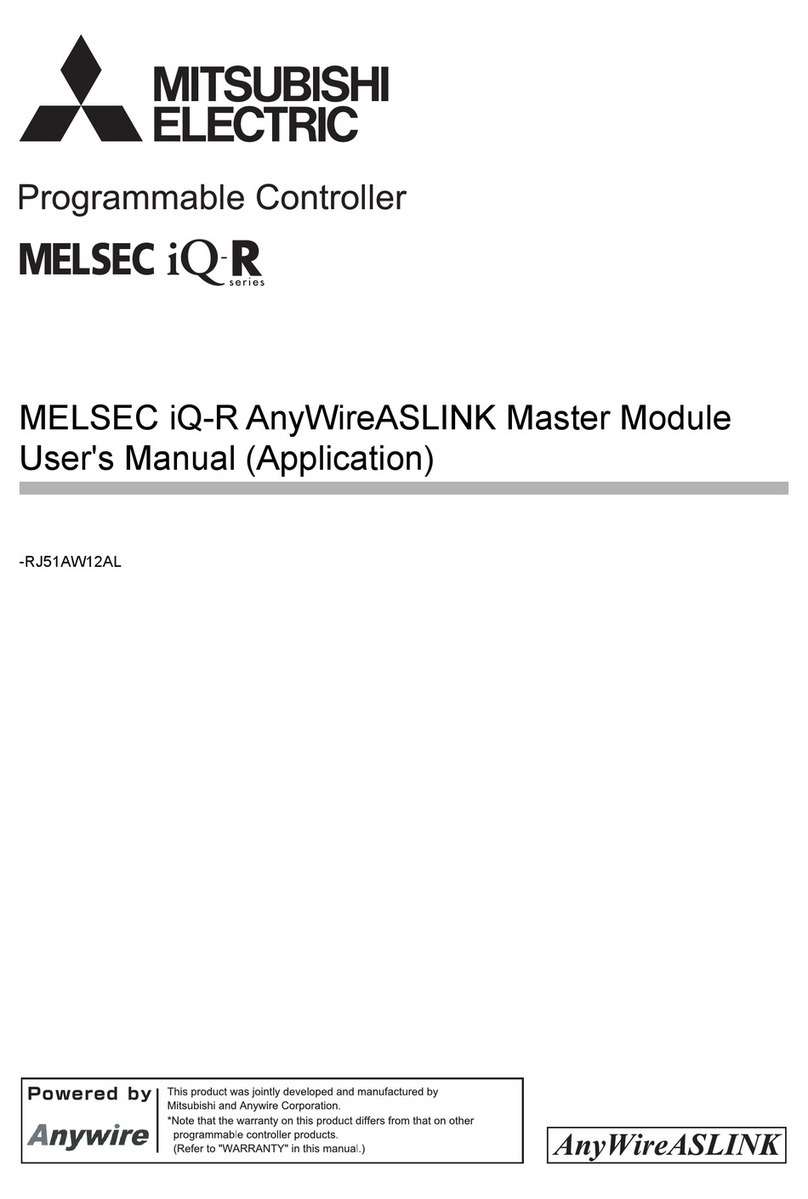
Mitsubishi Electric
Mitsubishi Electric MELSEC iQ-R AnyWireASLINK user manual

VAT
VAT 244 Series Installation, operating, & maintenance instructions
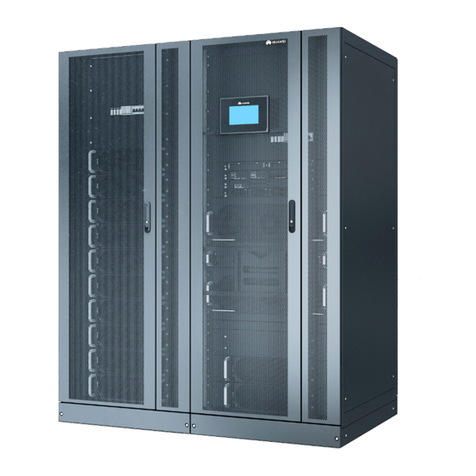
Huawei
Huawei UPS5000-H Series quick guide

Kohler
Kohler K-407 installation guide
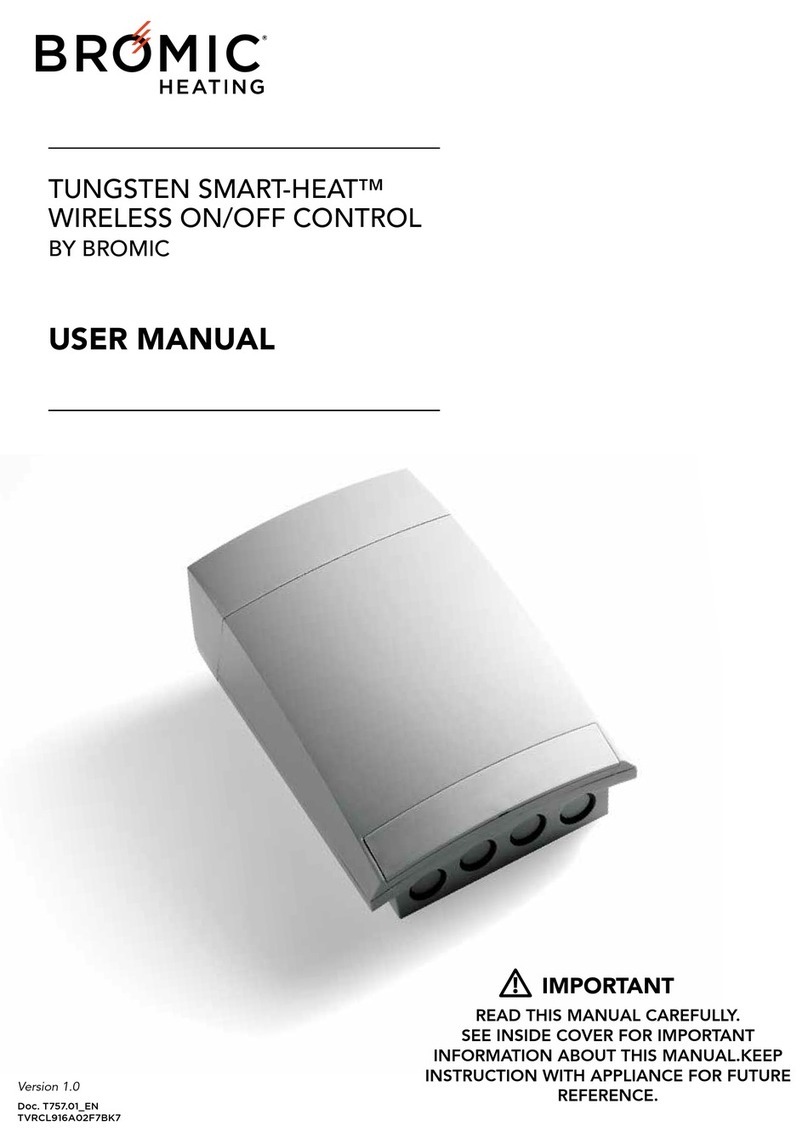
Bromic Heating
Bromic Heating TUNGSTEN SMART-HEAT BH3130010-2 user manual
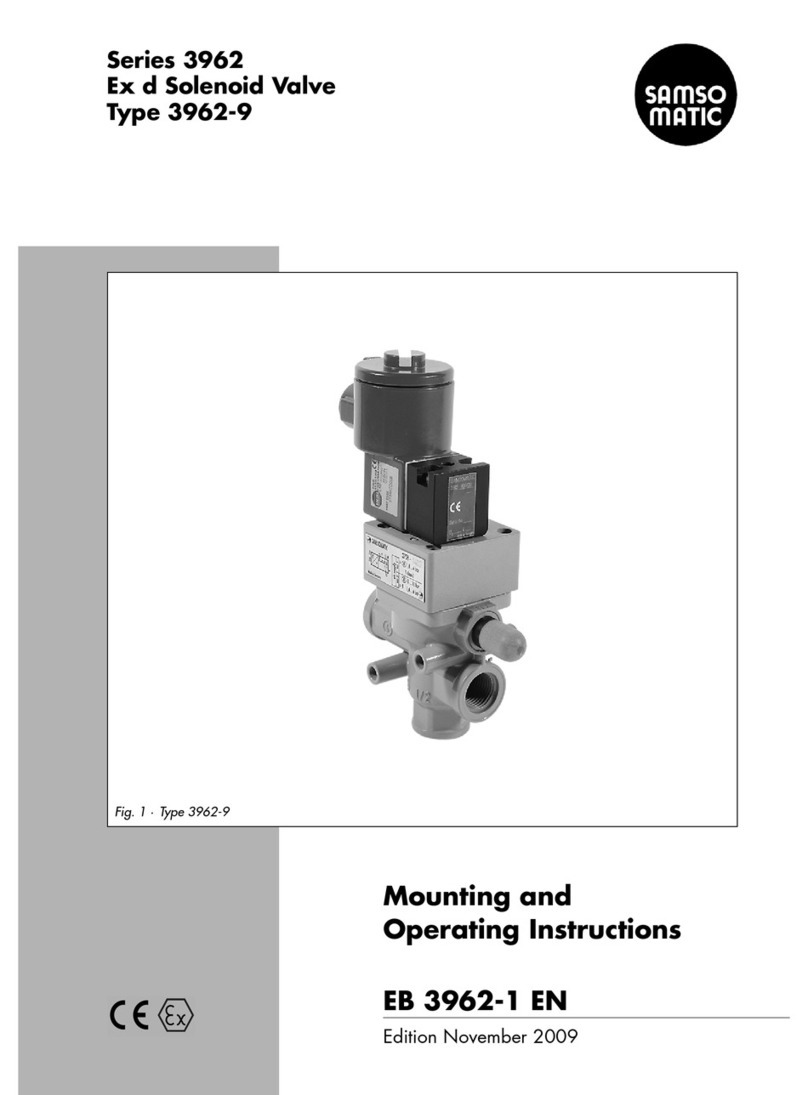
Samsomatic
Samsomatic 3962-9 Mounting and operating instructions
